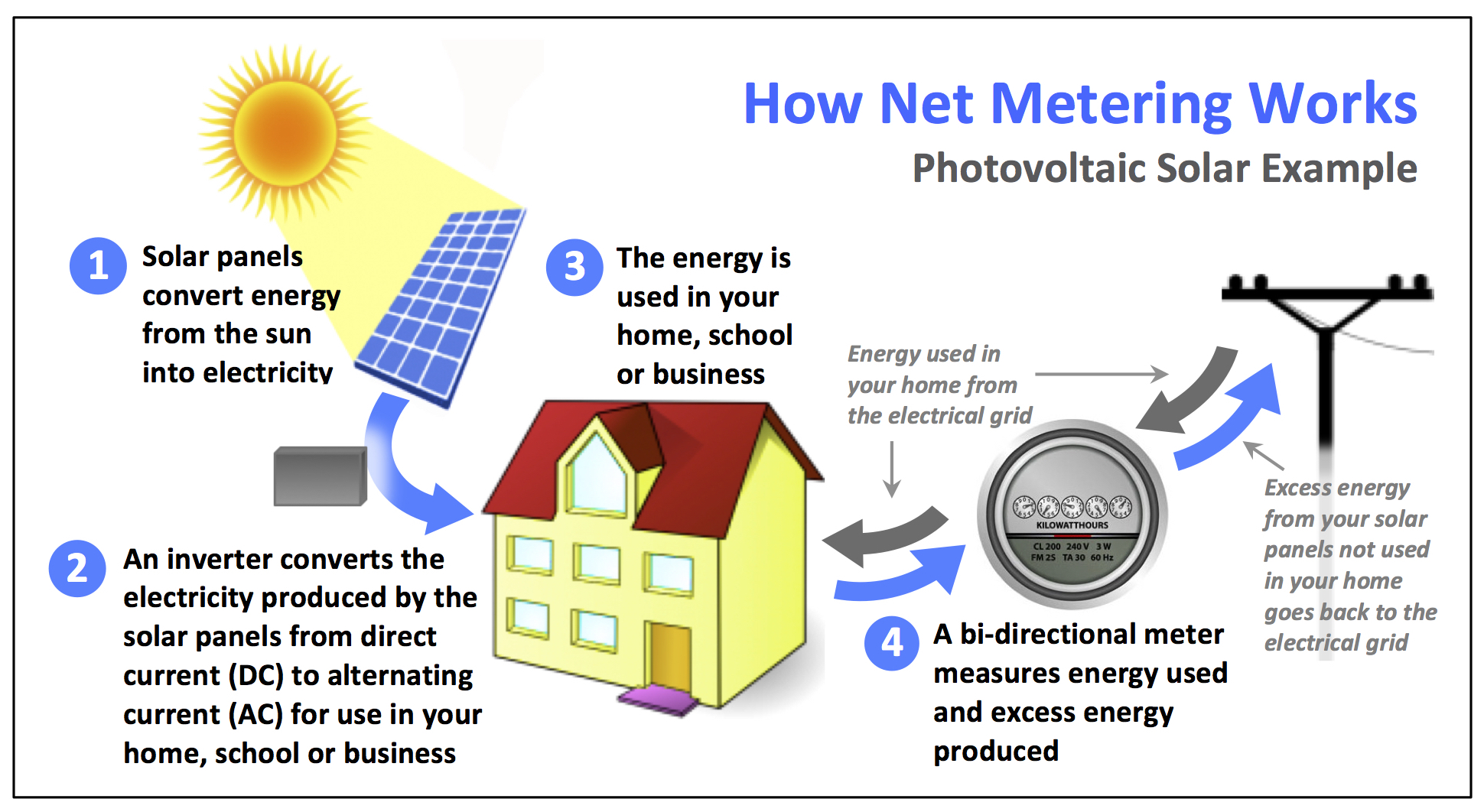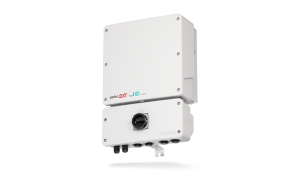
Solar Panel Placement
The ideal orientation for a solar array in New Hampshire is an azimuth (compass heading) of 195 degrees south, and a slope of 35 degrees (between an 8 and 9 roof pitch). Neither the azimuth nor the pitch needs to be perfect, but the productivity does fall off progressively as either axis moves away from the ideal.
Roof mounted solar panel arrays are generally both less expensive and visually less intrusive than that of ground mounted arrays, but few homes have an absolutely perfect orientation. Ground mounted arrays on the other hand are always installed with a near perfect orientation and are thus more productive, but the extra ground work also makes them more costly. The third factor that heavily affects solar production is shading. Partial shading is tolerable, but again, production will fall off drastically as the percentage of shading increases.
 Inverters
Inverters
An inverter converts the low voltage DC power coming from the solar array into the 220 volt AC that is fed into your main electrical panel. There are many types of DC/AC inverters and they all have their own particular strengths and weaknesses. Your V.H. Energy consultant will fully explain your inverter options to you and will make a recommendation for the one we think is best suited to your requirements.
Energy Usage
Once the inverter has fed the AC power into your existing electrical panel, it is available for use by your electrical appliances. You are now utilizing the clean, renewable power of the sun!
 Net Metering
Net Metering
Your electrical panel can draw power from the grid through your utility meter as it did before the solar installation, and also from the solar array during the day when it is producing energy. Any power generated by your solar array that is in excess of what you are consuming will be back fed to the grid. This happy give and take of AC power to and from the power supply grid is called net metering. Shortly after the installation of your new solar system, your utility company will visit your home or business to inspect the solar system and also replace your existing utility meter with a new bi-directional digital net meter.
The excess energy your system produces is stored in the electrical grid, and generates credits for you. You would use these credits during the evening when your system isn’t producing energy, and also in the winter months when your energy production is less. Our goal at V.H. Energy when we engineer a solar system for you is to eliminate your entire electric bill year round.